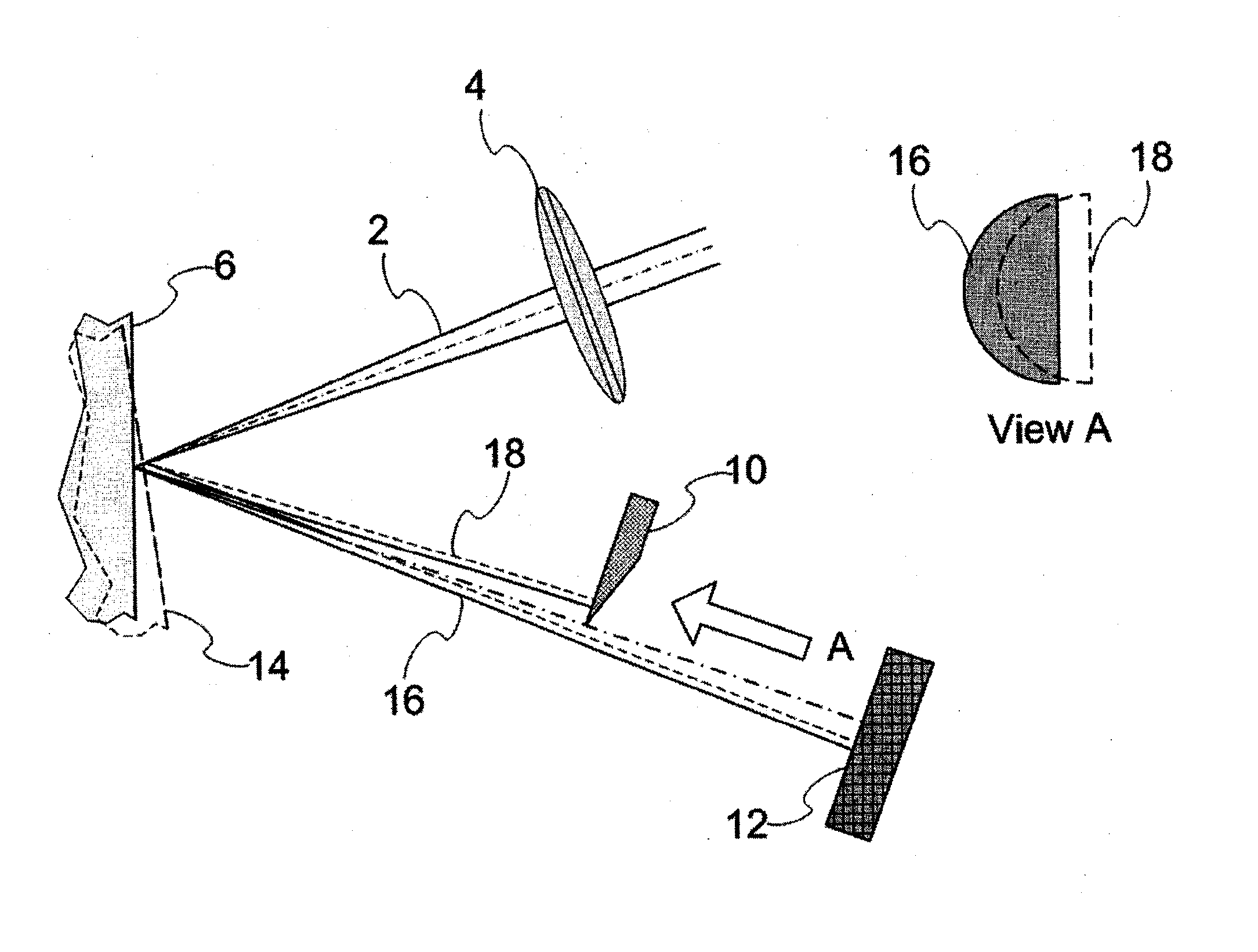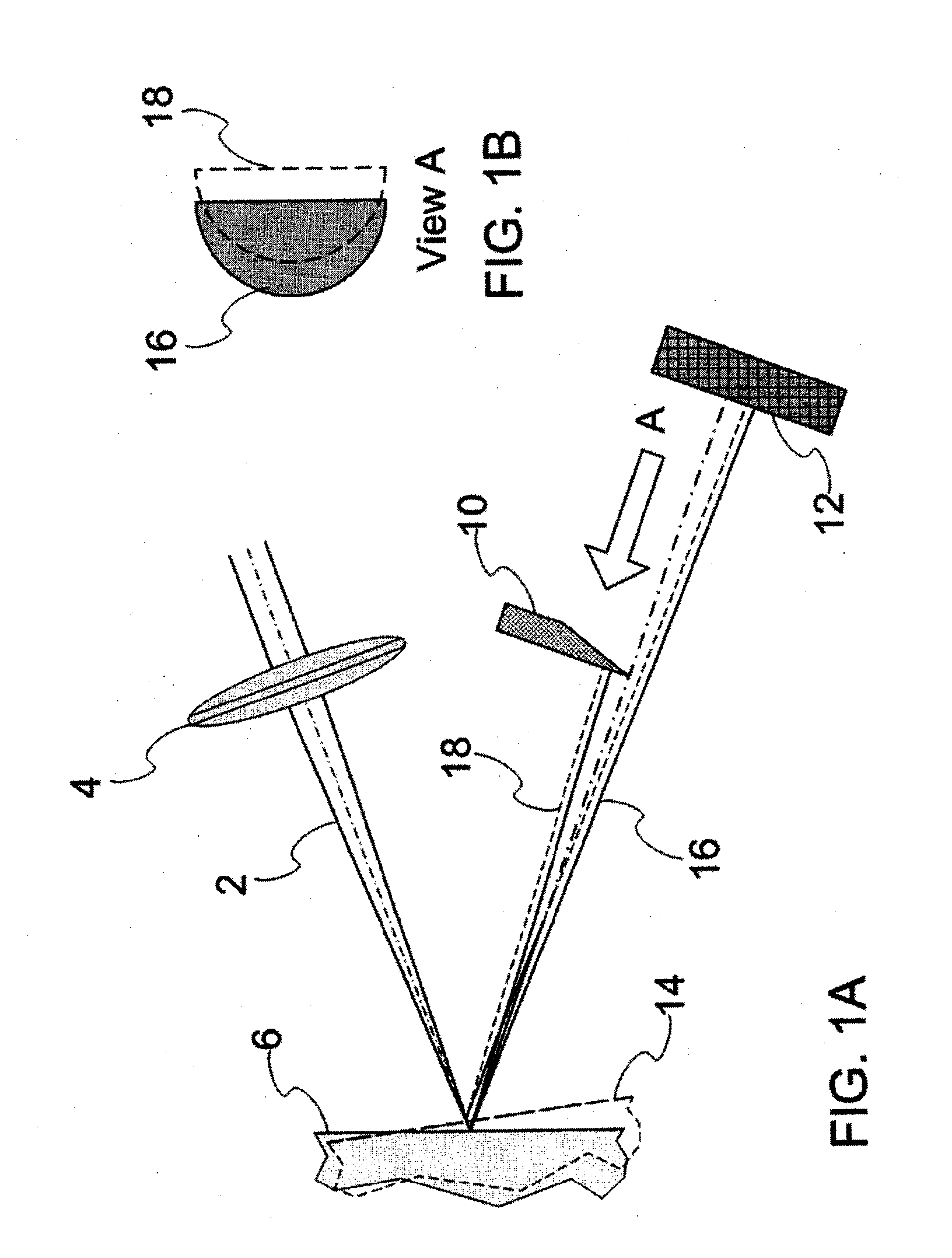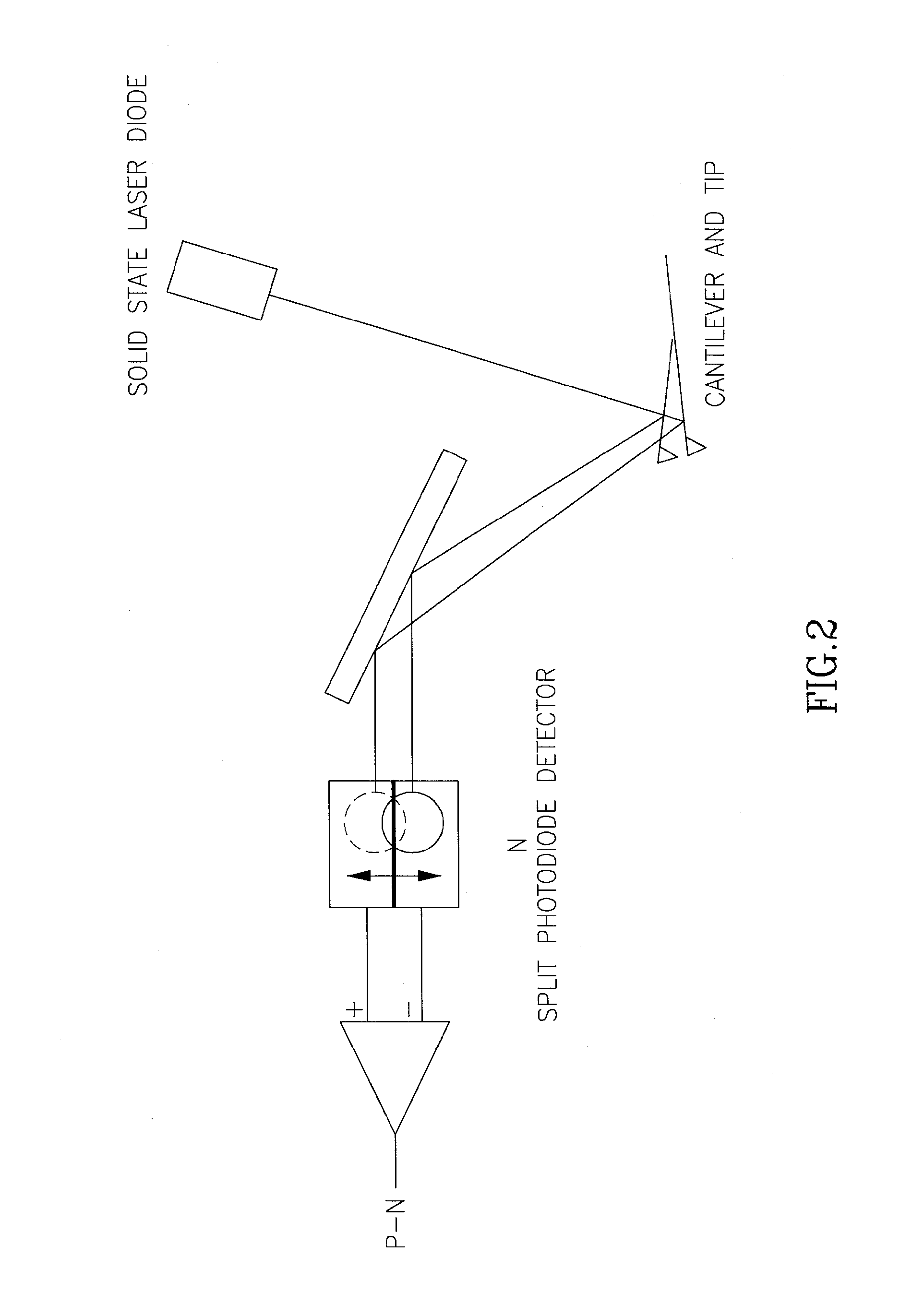Optical knife-edge detector with large dynamic range
- Summary
- Abstract
- Description
- Claims
- Application Information
AI Technical Summary
Benefits of technology
Problems solved by technology
Method used
Image
Examples
Embodiment Construction
[0061]Reference is now made to FIG. 4, which illustrates schematically the physical basis of a method by which the setup sensitivity and dynamic ranges (SSR and SDR) of the split detector knife-edge technique (KET) can be substantially increased. In this implementation, instead of a single beam being used to traverse the split detector to provide displacement information for that single spot, an array of beams is generated from reflections off the optically monitored surface, which can be the surface being measured or the surface of a cantilever which moves in accordance with the surface being measured. As the spots from these beams traverse the detector in sequence, the amplifier output responds continuously to the position of the particular spot traversing the split detector. The SSR range is then increased in proportion to the number of beams in the train of beam spots used—the greater the number of spots, the greater the SSR. In order to provide continuous signal coverage, the s...
PUM
 Login to View More
Login to View More Abstract
Description
Claims
Application Information
 Login to View More
Login to View More - R&D
- Intellectual Property
- Life Sciences
- Materials
- Tech Scout
- Unparalleled Data Quality
- Higher Quality Content
- 60% Fewer Hallucinations
Browse by: Latest US Patents, China's latest patents, Technical Efficacy Thesaurus, Application Domain, Technology Topic, Popular Technical Reports.
© 2025 PatSnap. All rights reserved.Legal|Privacy policy|Modern Slavery Act Transparency Statement|Sitemap|About US| Contact US: help@patsnap.com



